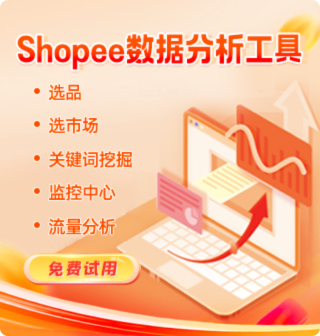-
用户140****3906
Shopee E-Commerce Platform: A Comprehensive Overview and Practical Insights
Shopee has emerged as one of the most influential e-commerce platforms in Southeast Asia and Taiwan since its inception in 2015. Known for its mobile-first approach, user-friendly interface, and extensive product offerings, Shopee has transformed how consumers and sellers interact in the digital marketplace. This article provides a detailed examination of Shopee as an e-commerce platform, its core features, advantages, and actionable tips for sellers and buyers aiming to succeed in this dynamic ecosystem.
1. What is Shopee?
Shopee is an online marketplace developed by Sea Group, designed to facilitate seamless buying and selling of goods across a variety of categories such as electronics, fashion, home & living, health & beauty, and many more. Its core strength lies in integrating a robust technological infrastructure with localized strategies tailored to different markets in Southeast Asia and beyond.
2. Key Features of Shopee E-Commerce Platform
a) Mobile-First Design
Shopee’s platform emphasizes mobile usability, supported by a highly rated app available on both iOS and Android. This focus corresponds with the high smartphone penetration rates in target markets, making Shopee accessible to millions of users anytime and anywhere.
b) Integrated Payment System (ShopeePay)
ShopeePay, the platform’s proprietary digital wallet, allows smooth, secure, and fast transactions. It supports various payment methods including credit/debit cards, bank transfers, and cash-on-delivery, catering to diverse user preferences and increasing buyer confidence.
c) User-Friendly Interface and Search Tools
Advanced search filters, AI-powered product recommendations, and an intuitive layout help users find products quickly and discover new items based on browsing behavior.
d) Seller Tools and Dashboard
Shopee provides sellers with a comprehensive dashboard featuring sales analytics, order management, inventory tracking, and marketing tools. These enable sellers to monitor performance and optimize operations.
e) Marketing and Promotional Campaigns
Shopee regularly organizes mega sales events (e.g., 9.9, 11.11, 12.12) featuring flash deals, vouchers, and free shipping. Sellers can also use Shopee Ads to boost product visibility, while buyers benefit from a variety of discounts.
f) Social Commerce and Live Streaming
Shopee incorporates social interaction elements such as live streaming, user reviews, and chat functions, fostering better engagement between buyers and sellers.
3. Advantages of Selling on Shopee
Wide Reach: Shopee operates in multiple countries including Malaysia, Singapore, Indonesia, Thailand, Vietnam, the Philippines, and Taiwan, enabling sellers to tap into vast markets.
Low Entry Barrier: Registration is straightforward, requiring minimal upfront costs, which is ideal for SMEs and individual entrepreneurs.
Logistics Integration: Shopee collaborates with various courier services to provide reliable and cost-effective shipping solutions, including Shopee’s own logistics arm in some countries.
Data-Driven Insights: The platform offers detailed analytics that help sellers understand consumer behavior and optimize listings.
Customer Protection: Shopee’s escrow payment system ensures buyer protection, releasing funds to sellers only after order confirmation, which increases trust.
4. Challenges Sellers May Face on Shopee
High Competition: The platform’s popularity means sellers often compete fiercely on pricing, necessitating differentiation through branding or superior service.
Fee Structure: While Shopee’s commission fees are generally competitive, sellers should carefully account for these costs along with shipping and advertising expenses.
Quality Control: With a vast number of sellers, maintaining consistent product quality can be challenging; sellers must invest in reputation management.
Dependence on Platform Policies: Changes in Shopee’s rules, algorithm updates, or promotional criteria can impact seller performance unpredictably.
5. Practical Tips for Sellers on Shopee
Optimize Product Listings: Use clear, high-resolution images, detailed descriptions, and relevant keywords to improve search ranking.
Leverage Shopee’s Marketing Tools: Participate in campaigns and use Shopee Ads strategically to increase product visibility.
Focus on Customer Service: Prompt responses, timely shipping, and effective returns handling boost seller ratings and repeat purchases.
Analyze Data Regularly: Utilize Shopee’s analytics tools to monitor sales trends, customer preferences, and competitive pricing.
Manage Inventory Efficiently: Avoid stockouts or excessive inventory to maintain good seller performance metrics.
6. Practical Tips for Buyers on Shopee
Review Seller Ratings and Feedback: Check reviews and ratings to ensure product authenticity and seller reliability.
Use ShopeePay and Vouchers: Take advantage of wallet promotions, discount coupons, and flash sales to maximize savings.
Verify Product Authenticity: Be cautious with brand-name products; purchase from official stores or trusted sellers when possible.
Track Orders: Use Shopee’s tracking features to stay updated and communicate with sellers if issues arise.
7. Future Trends and Shopee’s Position in E-Commerce
Shopee continues to innovate by expanding cross-border trade options, enhancing AI capabilities for personalized shopping, and integrating more social commerce features. The platform’s emphasis on mobile technology and localized market strategies positions it well for sustained growth amid increasing digital adoption in Southeast Asia.
Conclusion
Shopee has established itself as a powerhouse in the Southeast Asian e-commerce scene by combining technology, convenience, and localized expertise. For sellers, it offers a scalable platform with diverse tools to grow business, while buyers benefit from a vast product selection and secure shopping environment. Success on Shopee requires a deep understanding of its ecosystem, strategic use of its features, and continuous adaptation to evolving market dynamics. Embracing data-driven practices and customer-centric approaches can unlock the full potential of Shopee’s e-commerce platform.

